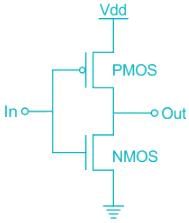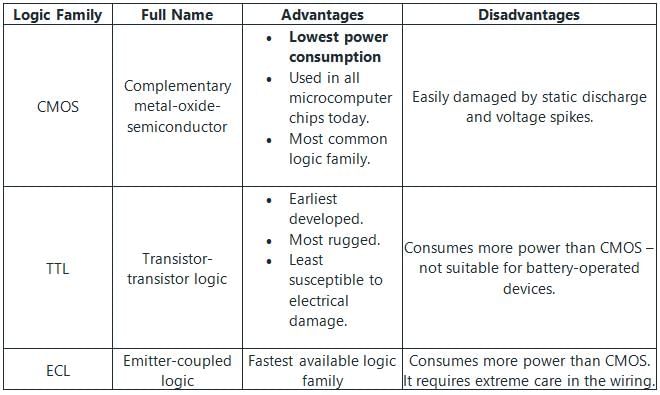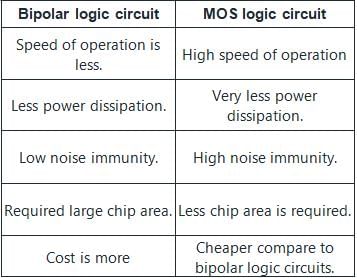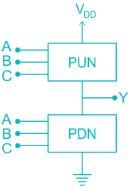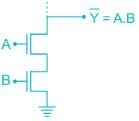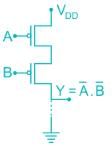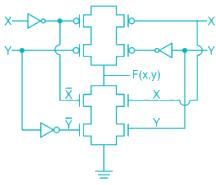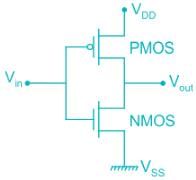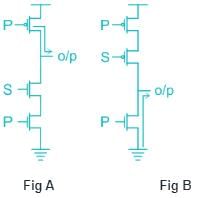Electronics and Communication Engineering (ECE) Exam > Electronics and Communication Engineering (ECE) Tests > Test: CMOS Implementation - Electronics and Communication Engineering (ECE) MCQ
Test: CMOS Implementation - Electronics and Communication Engineering (ECE) MCQ
Test Description
10 Questions MCQ Test - Test: CMOS Implementation
Test: CMOS Implementation for Electronics and Communication Engineering (ECE) 2025 is part of Electronics and Communication Engineering (ECE) preparation. The Test: CMOS Implementation questions and answers have been prepared
according to the Electronics and Communication Engineering (ECE) exam syllabus.The Test: CMOS Implementation MCQs are made for Electronics and Communication Engineering (ECE) 2025 Exam.
Find important definitions, questions, notes, meanings, examples, exercises, MCQs and online tests for Test: CMOS Implementation below.
Solutions of Test: CMOS Implementation questions in English are available as part of our course for Electronics and Communication Engineering (ECE) & Test: CMOS Implementation solutions in
Hindi for Electronics and Communication Engineering (ECE) course.
Download more important topics, notes, lectures and mock test series for Electronics and Communication Engineering (ECE) Exam by signing up for free. Attempt Test: CMOS Implementation | 10 questions in 30 minutes | Mock test for Electronics and Communication Engineering (ECE) preparation | Free important questions MCQ to study for Electronics and Communication Engineering (ECE) Exam | Download free PDF with solutions
Detailed Solution for Test: CMOS Implementation - Question 1
Test: CMOS Implementation - Question 2
Which one of the following statements is not correct for CMOS technology in comparison with bipolar technology?
Detailed Solution for Test: CMOS Implementation - Question 2
Test: CMOS Implementation - Question 3
A digital CMOS IC operating at 15 MHz clock frequency consumes 130 mW, the same IC operating at 10 MHz clock frequency consumes 100 mW power. The static power consumption of the IC is?
Detailed Solution for Test: CMOS Implementation - Question 3
Test: CMOS Implementation - Question 4
The full forms of the abbreviations TTL and CMOS in reference to logic families are
Detailed Solution for Test: CMOS Implementation - Question 4
Test: CMOS Implementation - Question 5
Which circuit takes the less chip area in large scale integration?
Detailed Solution for Test: CMOS Implementation - Question 5
Test: CMOS Implementation - Question 6
The typical quiescent power dissipation of low-power CMOS units is
Detailed Solution for Test: CMOS Implementation - Question 6
Detailed Solution for Test: CMOS Implementation - Question 7
Detailed Solution for Test: CMOS Implementation - Question 8
Test: CMOS Implementation - Question 9
The logic function f(X,Y) realized by the given circuit is

Detailed Solution for Test: CMOS Implementation - Question 9
Test: CMOS Implementation - Question 10
Output of the circuit shown below when S = 1 and S = 0 will be _____.

Detailed Solution for Test: CMOS Implementation - Question 10
Information about Test: CMOS Implementation Page
In this test you can find the Exam questions for Test: CMOS Implementation solved & explained in the simplest way possible.
Besides giving Questions and answers for Test: CMOS Implementation, EduRev gives you an ample number of Online tests for practice
Download as PDF




